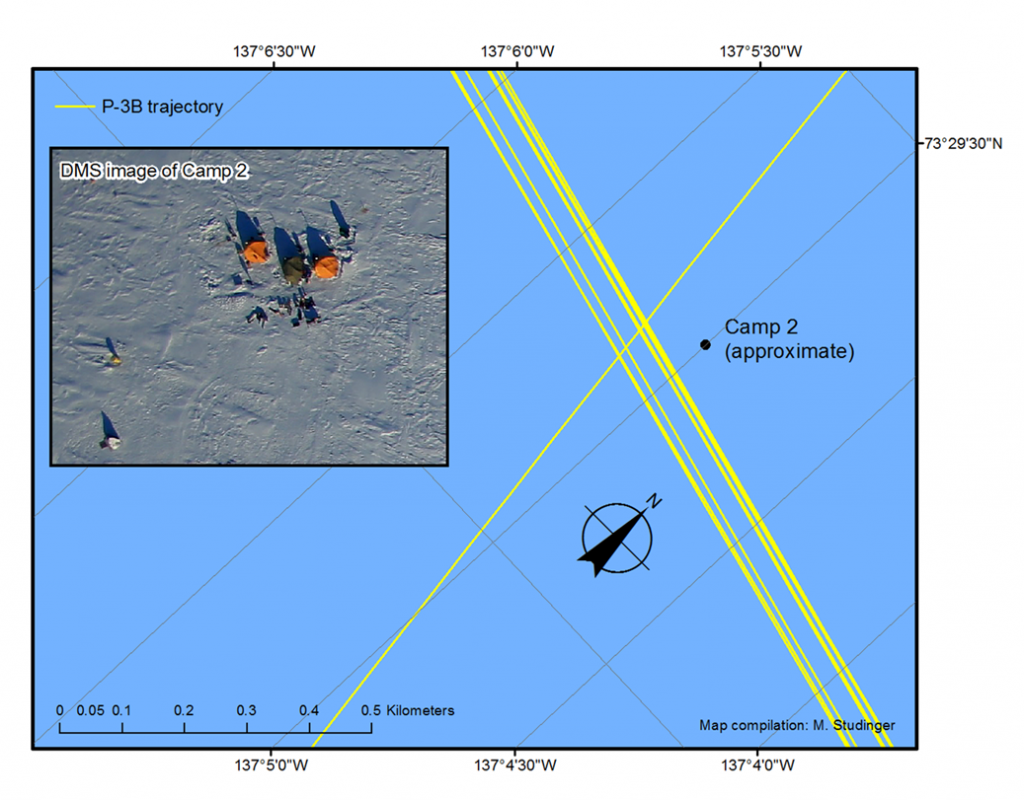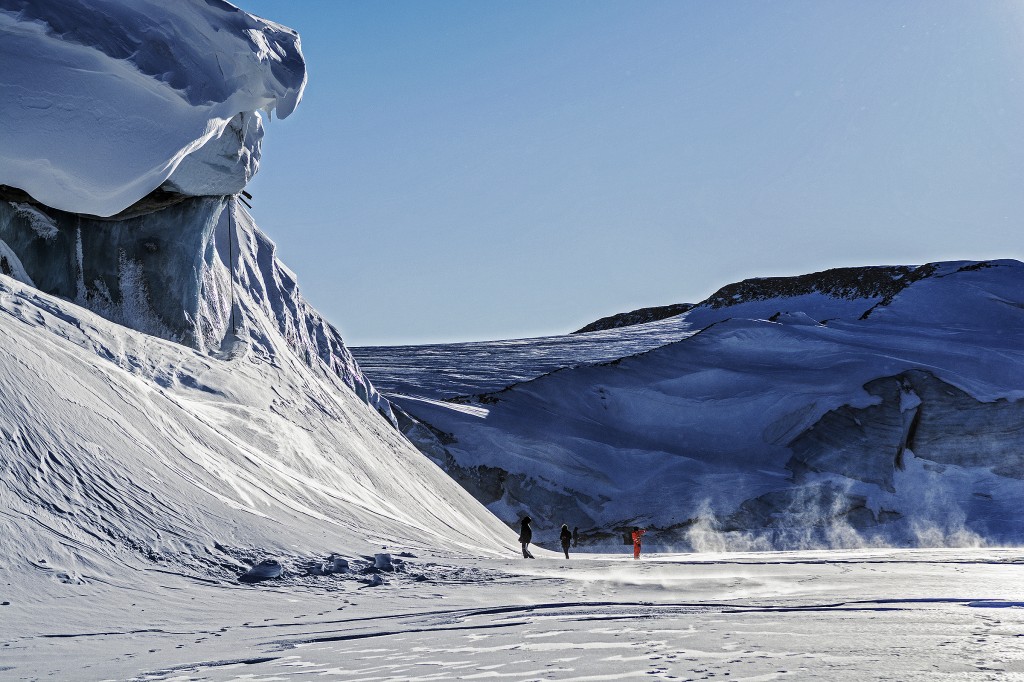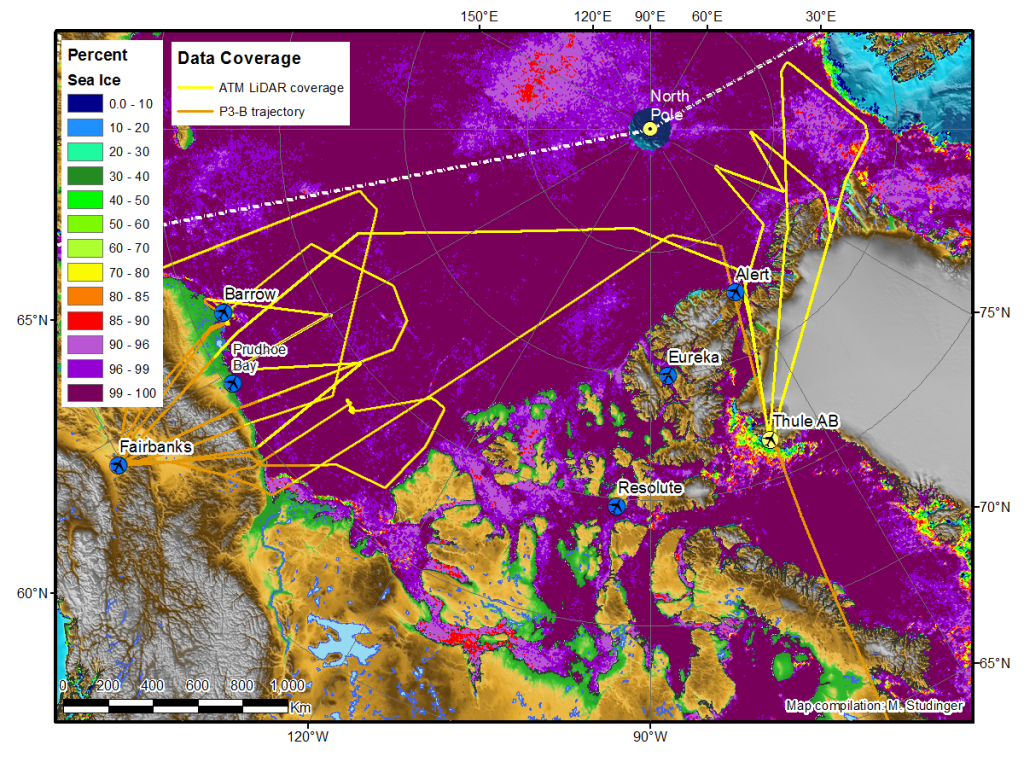IceBridge has successfully completed the second week of the Arctic 2014 deployment with the P-3. We have returned to Thule Air Base in northern Greenland and have recovered from a night flight crossing five time zones. We have flown four sea-ice science missions this week, as shown in the map. We have completed all planned missions from Fairbanks and have excellent data coverage over the Beaufort and Chukchi Seas.
P-3 aircraft have been featured extensively in the news this week. When you see the footage in the news add deafening noise and vibrations that make your laptop jump from the rack and you’ll have an idea of an 8-hour IceBridge flight. P-3s have been designed as long-range maritime surveillance aircraft, which makes it also an ideal platform for sea-ice science missions.
As well as flying for Operation IceBridge, we also teamed up with ESA’s CryoVex campaign to validate and calibrate data from the CryoSat satellite. Christian Hass from York University in Canada and René Forsberg from the National Space Institute (DTU-Space) in Denmark and their teams have collected data over a ground site at ONR/MIZ Camp 2 in the eastern Beaufort Sea. The Basler BT-67 is equipped with an EM bird for sea-ice thickness measurements and the Twin Otter has ASIRAS, the airborne simulator for the SIRAL radar on CryoSat as well as a laser altimeter.
The ground site included an excellent mix of different types of sea ice, including pressure ridges and also has leads at the end of the 15-km-long profile that we passed nine times within a 65-m swath, while the ice was drifting at 550 meters/hour. The leads allow us to determine sea-surface height and, therefore, precise freeboard for ice-thickness estimates. We have also produced a preliminary snow depth dataset from two missions north of Greenland that will help the CryoVex teams select a site for the joint calibration/validation experiment next week.

NASA P-3 collected data over the CryoVex ground site at ONR/MIZ Camp 2 in the eastern Beaufort Sea. (M. Studinger, NASA)
It is probably my fault to make everything we do sound smooth and easy, but rest assured it is not. Operating a P-3 and a suite of complex science instruments in an extreme environment is far from trivial. There are numerous challenges involved, but the tremendous experience and skill of both, the air crew and the instrument teams allows us to successfully complete our mission. We have excellent teams that are a joy to work with.
It is seasonally cold here in Thule with -24°C, and -32°C including wind chill.

IceBridge sea ice scientist Nathan Kurtz stands in front of an ice wall of the Store Landgletscher, also known as Great Land Glacier, near Camp Tuto at Thule, Greenland. This is where the NSF Greenland Inland Traverse (GrIT) leaves Thule to drive all the way to Summit Station on top of the Greenland Ice Sheet. (Michael Studinger,NASA)
Post from Michael Studinger (NASA), Thule, Greenland, 24 March 2014.









Discussion: no comments